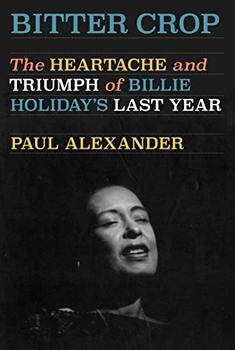Summary | Excerpt | Reviews | Beyond the Book | Readalikes | Genres & Themes | Author Bio
Great Minds, the Gilded Age, and the Triumph of Evolution in America
by Barry Werth

Critics' Opinion:
Readers' Opinion:
First Published:
Jan 2009, 400 pages
Paperback:
Apr 2011, 400 pages
 Book Reviewed by:
Book Reviewed by:
Micah Gell-Redman
Buy This Book
"My darling Ben," he wrote back at once, "I am overjoyed by the
prospect your letter opens before me. Of course I will go . . . as I feel there
never was, and is not likely soon again to be, such an opportunity for
promoting the cause of science generally, and that of natural history in
particular."
As Agassiz’s nemesis in Cambridge, in the councils of organized research,
and in the debate over the mysteries of the natural world, Asa
Gray seemed conspicuously ill suited - not overmatched intellectually, for
Gray possessed an exceptional mind, but in his relative lack of social connections,
financial support, and charisma, endowments Agassiz enjoyed
wielding against rivals. A few years Agassiz’s junior, Gray first trained as
a physician in upstate New York during the boom years after the opening
of the Erie Canal. Without formal education in botany, he collected and
traded in and elucidated the structural relations of plant species so prodigiously
that four years before Agassiz’s arrival in Cambridge he was called
to Harvard to teach plant biology - a smooth-faced, wiry, kinetic figure
who, at 135 pounds, half-sprinted around campus and up stairs, seeming
more student than professor.
Gray’s work was a model of carefully observed science without prejudice,
even though he himself was an orthodox Presbyterian and dutiful
follower of the Nicene Creed, the most widely utilized brief statement of
Christian faith: "We believe in one God, the Father, the Almighty, maker of
heaven and earth, of all that is, seen and unseen. We believe in one Lord, Jesus
Christ, the only Son of God. . . . " An indifferent teacher, Gray grimly tolerated
his students: the labors of attending to their needs while developing
and managing an herbarium of more than two hundred thousand specimens
exhausted him, and his own original research and writing often languished.
What Gray had, besides uncommon intellectual ferocity and a zest for
scientific combat equal to Agassiz’s, was his abiding, conflicted - and now
famous - relationship with Darwin. During the twenty-five years after
his voyage when Darwin developed his theory of natural evolution in
reclusion and secrecy, the first American he told of it was Gray, and only
then with crippling apprehension. Darwin, a painfully modest, cordialto-
a-fault English country gentleman, judged the risks of revealing such
heterodox thinking prematurely, without ample proof, to be monumental,
disastrous - "like confessing a murder." "I daresay I said that I thought
you would utterly despise me," he told Gray in 1857, two years before circumstances
forced him to publish his masterwork, The Origin of Species,
"when I told you what views I had arrived at."
By taking Gray into his confidence, Darwin ensured that Gray became
his American gatekeeper, and Gray worked skillfully to guarantee that
Darwin’s books were well published and widely disseminated, and that
his ideas received a fair hearing in intellectual circles - despite disapproving
of many of their implications. It was the publication of Origin, which
Darwin called "one long argument" for the view that new species develop
gradually through random variations that help some organisms survive
better than others, that had driven Gray twelve years earlier to confront
Agassiz, then at the height of his power and fame. Agassiz defined a
species as "a thought of God" - permanent, immutable, and designed
specifically as part of a divine plan. Christian faith notwithstanding, Gray
was too much of an empiricist to accept Agassiz’s metaphysical biology,
and so even as he realized somewhat bitterly in recent years how far he
and Darwin were from agreeing on the subject of intelligent design in nature,
he stood staunchly by him as Darwin’s man in the New World, his
first friend, collaborator, proxy, and shield. Gray longed to retire from
Harvard so he could write and pursue his own research, but as Darwin
became one of the world’s most famous and controversial men, his name
synonymous with an intellectual cataclysm, he was not readily let go.
"My Dear Gray," Darwin wrote from his country haven near the village
of Downe in Kent, twenty miles from London, days before Peirce invited
Agassiz to go abroad. He apologized as always for adding to Gray’s
burdens. "If you can, will you send the enclosed to anyone who has charge
of Laura Bridgeman [sic] & beg for an answer." As a near-invalid who
seldom left his home and gardens except to seek seaside rest cures or visit
close colleagues and family members in London, Darwin relied utterly on
his scientific friends to assist his investigations. Laura Bridgman was
something of a national treasure, a Victorian version of Helen Keller,
whom she later would inspire. Though blind and deaf, she had been educated
through sign language, and Darwin had read in Smithsonian Contributions
to Knowledge, the new museum’s Lazzaroni-inspired journal for
touting American science, that when astonished, she raised both her
hands with her fingers extended and pressed her open palms toward the
person causing her amazement. Since she couldn’t acquire expressions
through imitation, Darwin theorized that such movements were traceable
to animal behaviors. "I should very much like to know how this is,"
he asked Gray.
Excerpted from Banquet at Delmonico's by Barry Werth. Copyright © 2009 by Barry Werth. Excerpted by permission of Random House, a division of Random House, Inc. All rights reserved. No part of this excerpt may be reproduced or reprinted without permission in writing from the publisher.





The House on Biscayne Bay
by Chanel Cleeton
As death stalks a gothic mansion in Miami, the lives of two women intertwine as the past and present collide.

The Flower Sisters
by Michelle Collins Anderson
From the new Fannie Flagg of the Ozarks, a richly-woven story of family, forgiveness, and reinvention.

The Funeral Cryer by Wenyan Lu
Debut novelist Wenyan Lu brings us this witty yet profound story about one woman's midlife reawakening in contemporary rural China.
Your guide toexceptional books
BookBrowse seeks out and recommends the best in contemporary fiction and nonfiction—books that not only engage and entertain but also deepen our understanding of ourselves and the world around us.